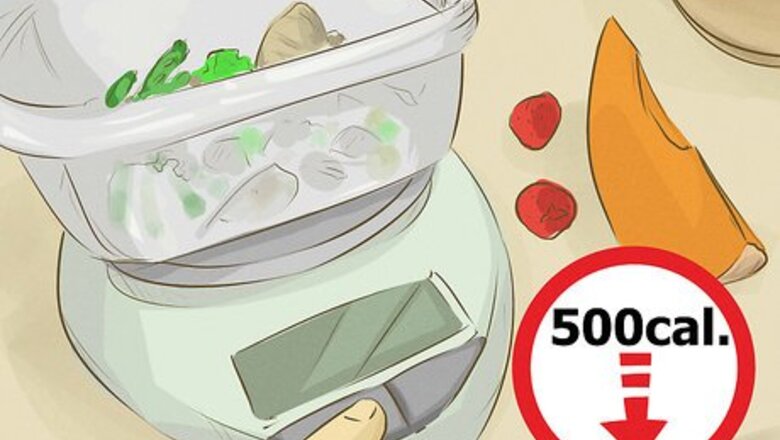
views
X
Research source
Unfortunately it isn't something you can get rid of overnight. However, sticking to a healthy eating pattern and exercise routine can help you minimize the look of excess fat or skin around your neck.
Making Dietary Changes
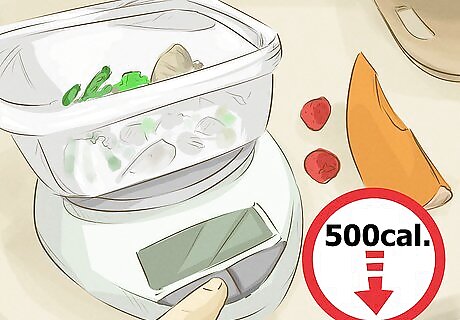
Decrease your daily calorie intake. No matter where you want to lose weight, you'll need to decrease your overall weight. Decreasing your total daily calories will help you do that. Decrease your total daily caloric intake by about 500 calories daily. This will generally result in about 1 pound of weight loss per week. Cutting out too many calories may result in slower weight loss and nutrition deficiencies since you're not able to eat the recommended amount of essential nutrients you need daily. It's helpful to use a food journal or journaling app to help you count how many calories you currently eat daily. Then subtract 500 calories to find a total to shoot for daily to help you lose weight.
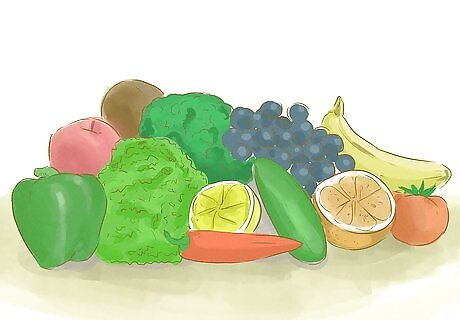
Eat a lot of fruits and vegetables. Both fruits and vegetables are very low calorie and very high in fiber, vitamins and minerals. Making half your meals and snacks a fruit or vegetable can easily help you cut down on overall calorie intake. It's typically recommended to consume about 5 to 9 servings of fruits and vegetables each day. A serving of fruit is about 1/2 cup chopped or 1 small piece. A serving of vegetables is 1 cup cooked veggies, or 2 cups of salad.
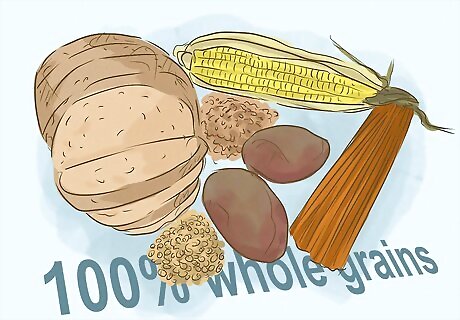
Switch to healthier carbohydrates. Whole grains (grains that contain the bran, germ and endosperm) contain more fiber and other essential nutrients than refined grains. When you choose to eat a grain-based food, choose 100% whole grain. Choose whole grain foods like: 100% whole wheat pasta, 100% whole wheat bread, brown rice, whole grain oats, quinoa or barley. Refined carbohydrates (foods made with white flour or overly processed) offer very little in the way of nutritional benefits. Fiber also slows the digestive process, making you feel full for a longer period of time and giving your body a longer period of time to absorb nutrients.

Eat lean protein. Lean protein is essential to all diets, but even more important for a weight loss diet. The amount of protein you need depends on a number of factors, including your activity level and weight. Lean protein has been shown to keep you feeling satisfied longer compared to other nutrients like carbohydrates. Include a 3 – 4 oz serving of protein with 2 of your meals or snacks. This serving size is similar to the size of an adult palm or a deck of cards. Foods to try include: low-fat dairy, seafood, lean beef, poultry, eggs, legumes and tofu.
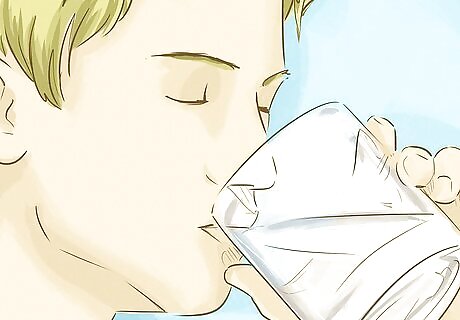
Stay hydrated. Water is essential in keeping your bodily functions running properly. Moreover, hydrated skin is far less likely to sag or appear loose. Aim to consume least eight 8-oz glasses (about 2 liters) of hydrating fluids daily. Some people may need up to 13 glasses (3 liters) daily. This will depend on your weight, gender and activity level. Water also helps control your appetite. Thirst and dehydration can feel and seem like hunger, which could trigger you to eat when all you really need is a glass of water. Opt for water and unsweetened beverages over sugary drinks like juice, sweetened coffee drinks, and soda. Sweetened drinks are high in empty calories.
Incorporating Physical Activity

Perform cardiovascular exercises. Aerobic or cardio exercise will help burn calories and support your weight loss. The Center for Disease Control (CDC) recommends that adults perform up to 300 minutes of moderate-intensity cardio each week, or up to 60 minutes per day 5 days of the week. Try a variety of exercises like: walking, jogging/running, biking, using the elliptical, swimming or dancing. In addition to helping support weight loss or a healthy weight, cardiovascular activities have also been shown to help manage diabetes, blood pressure and cholesterol levels.

Do 2 days of strength training. In addition to cardiovascular exercise, you should also include a few days of strength or resistance training. The CDC recommends 2 days of strength training for at least 20 minutes a session. It's also recommended to do a variety of exercises so that you will work each major muscle group (legs, chest, core, arms, etc). There are a variety of activities that can count as strength training including: lifting free weights, using weight machines, yoga and pilates.
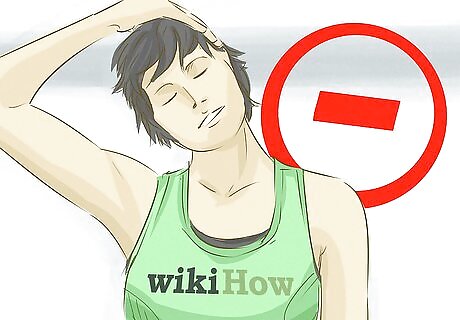
Avoid neck toning exercises. There are a variety of exercises that have been promoted to help get rid of neck fat; however, most have the opposite effect. Although you might think that working or strengthening the muscles around your neck could help get rid of fat, these exercises may only bulk up your neck muscles. Bulky muscles will make your neck look thicker, not smaller. In general, when you lose weight, you will notice a decrease in the amount of fat that you carry around your neck.
Considering Skin Care Products

Always wear sunscreen. In addition to diet and exercise, wearing regular sunscreen can help slow the look of wrinkled, sagging, aged skin. If you have sun damaged skin that is wrinkled and looks more aged, this can worsen the look of the excess fat stored around your neck. It's recommended to wear a broad-spectrum sunscreen with 30 SPF year-round for both men and women. You may need higher SPF if you're in direct sunlight for longer periods of time. Reapply every two hours and wear a broad-rimmed hat for extra coverage.

Use retinol creams. There are a variety of retinoid-based wrinkle creams available over-the-counter and also by prescription. Some of these creams will help build collagen and smooth wrinkles. Used in combination with sunscreen, moisturizers, diet and exercise, these creams can help reduce the look of sagging, wrinkled neck skin. Procedures and creams used in a dermatology office are considered the best or gold standard and generally receive the best results.
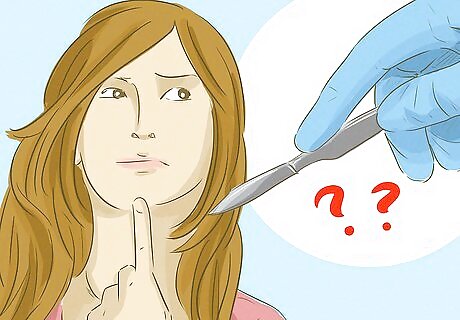
Consider surgical treatment. If you've tried diet, exercise and skin creams, you may want to consider a more drastic measure to remove excess fat or skin around your neck. There are a variety of treatment options available including: liposuction, botox, laser treatments and neck lifts. Make a consultation with a dermatologist to get an idea of what would be best for your body and budget (as some of these treatments can be costly).

















Comments
0 comment